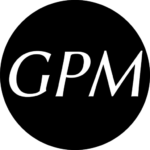Institute Design
The Writing Across Technology (WAT) Institute is a professional development program for multimodal composition originating in the First-Year Writing program. The writing program describes the WAT Institute as a series of workshops, “each centered around a mode of composition and one of the course moves of First–Year Writing’s new curriculum.” Participants in this workshop “[e]xperiment with several programs for multimodal composition . . . [c]ompose their own multimodal projects,” and “[l]earn how to implement studio pedagogy in their classes.”
While originally conceptualized as a three-day intensive program in some respects fashioned after the Ohio State University’s Digital Media and Composition Institute (DMAC), budgetary and bureaucratic constraints pushed coordinators to reimagine it as a series of four 3-hour workshops spaced one month apart across one semester. Realizing there wouldn’t be time to deliver requisite technical training along with the other content they planned for these workshops, coordinators opted for a “flipped” professional development model (Brewer et al., 2018). They developed online, self-paced tutorial modules that guided participants through a multimodal composition software before each workshop. When participants arrived, they used the skills they had acquired in these tutorial modules to experiment alongside peers in creating a rough draft of a multimodal project (e.g., a podcast or a website). These “making activities” were intended to model the kinds of assignments and in-class work instructors might ask students to do in their courses. At the end of each workshop, time was set aside for peer review, developing pedagogical materials, and reflection. (See Appendix A for more details.)
Before this study began, the two faculty directors of the First-Year Writing program secured university funding to pay a team of five graduate student coordinators to design the institute during the summer and facilitate workshops throughout the subsequent fall semester. All First-Year Writing instructors were invited to participate in the WAT Institute. Enrolling in the institute was voluntary and free. The invitation email noted that participants would receive a certification allowing them to teach the new studio component of the course that would debut the next year. Of the twenty-nine participants who enrolled, twenty-one (72%) were graduate students, four were part-time faculty (14%), three were full-time faculty (10%), and one participant was a high school teacher teaching First-Year Writing courses as part of the university’s dual-enrollment program. One of the institute’s faculty directors noted this was the “biggest attendance of anything we’ve done” outside of mandatory orientations.
Program Context
The WAT Institute responded to the exigence of a curriculum redesign that shifted the program’s emphasis to active and accessible learning alongside the development of 21st-century literacy skills. This new curriculum featured five “course moves” intended to encourage backward design (Wiggins and McTighe, 2005) of assignments that aligned with the program’s revised learning objectives. Another key component of the redesign was breaking what was previously a 4-credit writing seminar into a 3-credit seminar with a 1-credit digital composing studio (see Appendix B).
At the time of this study, the redesigned curriculum was in its third year of development, with a handful of instructors piloting the redesigned course before the curriculum changes went program-wide the following year. Although updates on the curriculum’s redesign had been well-publicized within the department since the initiative began, including through optional presentations and workshops on curriculum changes, most First-Year Writing instructors had not fully implemented this curriculum into their course designs before the WAT Institute began.
© Gabriel Morrison, 2021

